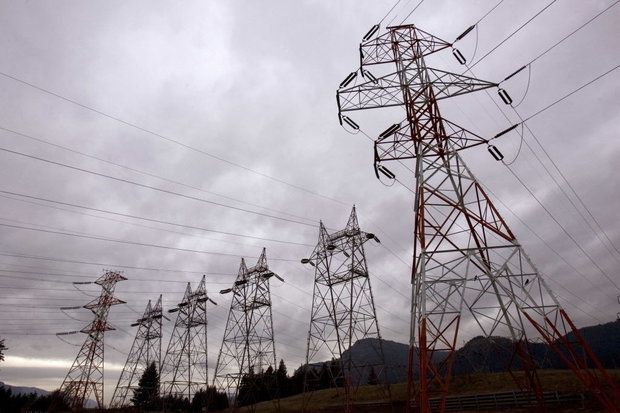forum
library
tutorial
contact

Under Threat, BPA
Maps Out Survival Strategy
by Pete Danko
Portland Business Journal, February 12, 2018
|
the film forum library tutorial contact |

|
Under Threat, BPA
by Pete Danko
|
Cheap fracked natural gas have undercut surplus-power sales that once bolstered the bottom line.
 Federal power and transmission agency, a Northwest bedrock, moves to remain commercially viable.
Federal power and transmission agency, a Northwest bedrock, moves to remain commercially viable.
'If we aren't commercially viable, everything we're doing, everything from reliability and load service to fish and wildlife, energy efficiency, all of those public purposes, come under threat,' Mainzer said.
Headquartered in Portland, BPA is a vast federal agency, with more than 3,000 employees. It sells power from 31 federal dams and the Northwest's only commercial nuclear plant, and owns and operates 15,000 miles of transmission lines and associated infrastructure, comprising about three-quarters of the region's high-voltage grid.
BPA has been counted on for years to provide cheap power to public utility districts, but that's become increasingly difficult to do over the past decade.
Demand has been flat, and renewable energy -- solar power from California especially, but also thousands of megawatts of wind power BPA itself has enabled in the Gorge -- as well as cheap fracked natural gas have undercut surplus-power sales that once bolstered the bottom line. At the same time, costs -- for a struggling salmon recovery program, an aging hydro fleet and a transmission system that demands modernization -- have increased steadily.
As a result, the Public Power Council says rates for public utility customers it represents have risen 34 percent since 2009, more than double overall inflation.
'The cost and rate trajectory has been real concerning to customers for a while,' said Scott Corwin, the group's executive director. 'When the next set of power contracts are up, it will be a real choice between Bonneville and other suppliers.'
Those contracts come up in 2028.
'It's not something we're in a panic mode about, but it's something that, 10 years out, we need to start taking very concerted and focused efforts to get on top of,' Mainzer said. Included in the plans: allowing the workforce to fall by 10 percent through attrition over the next several years.
The first signs of progress (or not) in a new, top-down budgeting approach could come later this year when BPA puts out an initial proposal for rates for the 2020 and 2021 fiscal years.
'I've got a lot of people right now scrubbing numbers and working really, really hard on their budgets to put some significant controls on our entire cost portfolio so that we're not continuing to escalate above the rate of inflation,' Mainzer said.
That's what BPA's customers want to hear. Other stakeholders are watching the agency closely as well, with varying priorities.
NW Energy Coalition, which advocates for more renewables and energy efficiency, likes what it's hearing and seeing from Mainzer.
Fred Heutte, a senior policy associate for the group, lauded BPA for working with Montana officials to explore ways of opening up transmission space that could connect a very attractive wind resource to Northwest population centers.
'They didn't have to do that, but they did, and it's the kind of thing that can provide real benefits,' Heutte said.
How bold BPA will or can be on more profound issues remains to be seen, however. Western energy markets are in flux, and the agency is angling to find new ways to take advantage of its emissions-free, flexible capacity. Greater market integration could help, but many in the Northwest fear the region could regret ceding any control of a resource held dear.
Fish and wildlife programs, a legacy of the hydropower system's profound environmental impact and a source of never-ending legal battles, are another dicey political issue. They make up about a third of BPA's power rates, Mainzer said.
'This is not a popular message in some quarters,' he said, 'but . . . we need to take a hard look at what we're spending our dollars on to make sure we're investing in actions that give us the biggest biological impact for every dollar that we're spending.'
Joseph Bogaard, executive director of the Save Our Wild Salmon coalition, sees that as an argument for removing four dams on the Snake River, which he said would do more for salmon (and endangered killer whales in the waters off the Pacific coast) than the 'unproven techno fixes' that have been tried over the years at a cost of at least $10 billion.
Mainzer isn't taking a position on breaching the dams -- he said 'the future of the Snake River dams is an important question that is being carefully analyzed' in an ongoing review -- but in raising big questions, he's clearly getting peoples' attention.
'That's the most direct I've heard Elliot speak to the issues that need to be tackled and addressed in our region, not just by Bonneville, but by various stakeholders,' Bogaard said of Mainzer's comments. 'That's encouraging.'
Related Pages:
Under Threat, BPA Maps Out Survival Strategy by Pete Danko, Portland Business Journal, 3/1/18
Removing LSR Dams a Colossal Breach of Logic, by Terry Flores, The Register-Guard, 12/11/6
learn more on topics covered in the film
see the video
read the script
learn the songs
discussion forum
